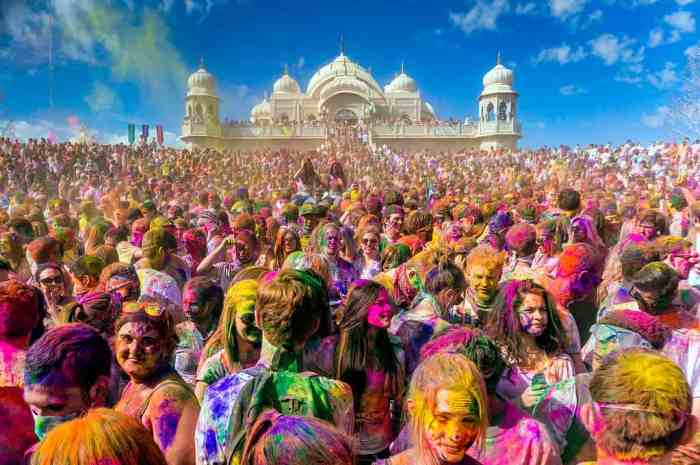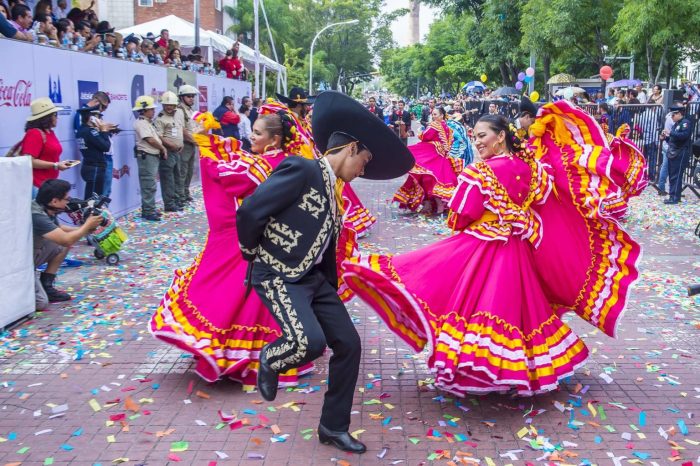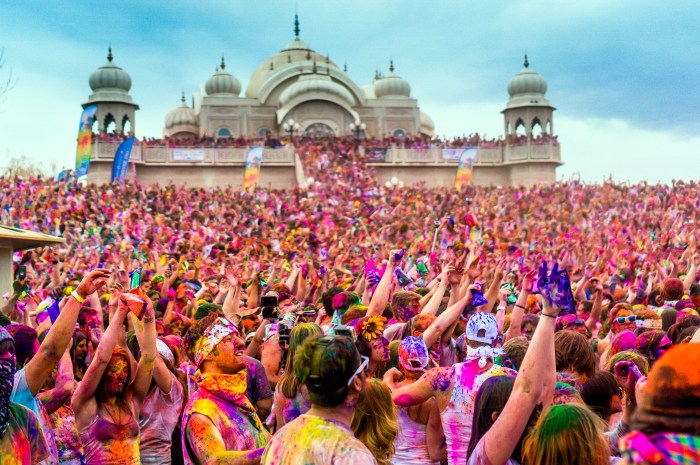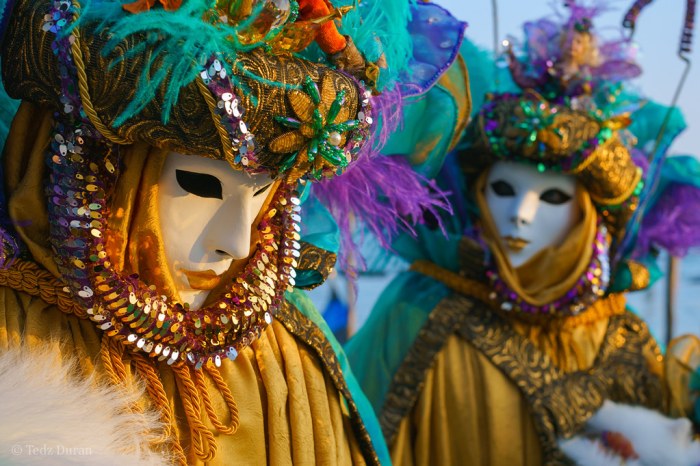Best cultural festivals worldwide – Delving into the world’s vibrant tapestry of cultural festivals, we embark on a journey that celebrates the rich diversity of human expression. From the bustling streets of Rio de Janeiro to the serene temples of Kyoto, these festivals showcase the unique traditions, customs, and values that define communities across the globe.
Through the lens of cultural significance, we explore how these festivals serve as living testimonies to heritage, fostering a sense of identity and belonging. Their impact extends beyond the realm of tradition, contributing to tourism, economic development, and social cohesion, weaving a vibrant thread into the fabric of local and global communities.
Popular Cultural Festivals Around the World

Cultural festivals are vibrant celebrations that showcase the unique traditions, arts, and heritage of different regions around the globe. These events offer a glimpse into the rich tapestry of human expression, fostering cultural exchange and understanding. Here is a comprehensive list of some of the most popular cultural festivals celebrated worldwide, organized by continent or region:
Africa
- Carnaval de Luanda (Angola): A vibrant street festival featuring music, dance, and colorful costumes.
- Fes Festival of World Sacred Music (Morocco): A renowned festival showcasing traditional and contemporary sacred music from around the world.
- Lamu Cultural Festival (Kenya): A celebration of Swahili culture, featuring traditional dance, music, and poetry.
Cultural Significance and Impact

Cultural festivals hold immense cultural significance, serving as platforms to showcase and preserve traditional practices, customs, and beliefs. They play a vital role in fostering cultural identity, connecting communities, and promoting intergenerational knowledge transfer. By celebrating diverse art forms, music, dance, and cuisine, these festivals create a sense of belonging and shared heritage.
Preserving Cultural Heritage, Best cultural festivals worldwide
Cultural festivals act as living archives, safeguarding and transmitting cultural heritage from one generation to the next. They provide opportunities for artisans, musicians, and performers to display their skills, ensuring the continuity of traditional crafts, art forms, and performance practices. Through storytelling, rituals, and ceremonies, festivals preserve and revitalize indigenous knowledge, oral histories, and cultural practices that might otherwise be lost.
Promoting Cultural Values
Beyond preserving cultural heritage, festivals also promote and reinforce cultural values. They embody the shared beliefs, ethics, and aspirations of a community, fostering a sense of unity and purpose. By showcasing traditional customs, festivals educate younger generations about their cultural roots and instill a sense of pride and appreciation for their heritage.
Economic Impact
Cultural festivals have a significant economic impact on local communities. They attract tourists from near and far, generating revenue for businesses such as hotels, restaurants, and transportation services. The sale of souvenirs, handicrafts, and artwork further contributes to the local economy. Additionally, festivals create employment opportunities for artists, performers, and organizers, providing a source of income for many individuals.
Social Cohesion
Cultural festivals foster social cohesion by bringing people together from all walks of life. They create a shared space for interaction, dialogue, and mutual understanding. By celebrating diversity and inclusivity, festivals promote tolerance, empathy, and a sense of community. They provide opportunities for people to connect with their cultural roots, learn about other cultures, and break down barriers between different groups.
Unique Traditions and Customs

Cultural festivals are a vibrant tapestry of unique traditions, customs, and rituals that have been passed down through generations. These practices often have deep-rooted origins and profound symbolism, contributing significantly to the overall festival experience.
While the world is brimming with vibrant cultural festivals that ignite the senses, it’s equally important to appreciate the natural wonders that grace our planet. If you seek a tropical escape, look no further than the best beaches in the Caribbean.
With their crystal-clear waters, powdery white sands, and swaying palm trees, they offer a blissful respite. However, let’s not forget the rich cultural experiences that await us back home, where festivals bring communities together to celebrate traditions and heritage.
From elaborate costumes and traditional performances to symbolic food and intricate decorations, each festival showcases a distinct cultural heritage. These traditions not only provide a glimpse into the past but also foster a sense of community and cultural identity.
Traditional Performances
Cultural festivals are renowned for their captivating traditional performances that showcase the artistry and storytelling traditions of the region. These performances can include:
- Dance: Traditional dances are often a highlight of cultural festivals, with vibrant costumes, intricate footwork, and expressive movements that tell stories or depict cultural beliefs.
- Music: Live music is an integral part of many festivals, featuring traditional instruments, melodies, and rhythms that create a lively and festive atmosphere.
- Theater: Traditional theater performances, such as puppet shows or masked plays, often convey cultural myths, legends, or social commentary.
Traditional Costumes
Festivals are a time for people to dress in their finest traditional attire, which often reflects the cultural identity of the region. These costumes may include:
- Colorful fabrics: Traditional costumes often feature vibrant colors and intricate patterns that represent cultural heritage and symbolism.
- Embroidery and embellishments: Costumes may be adorned with intricate embroidery, beads, or other embellishments that enhance their beauty and significance.
- Headwear: Traditional headwear, such as hats, turbans, or scarves, often plays an important role in completing the festival attire.
Traditional Food
Food is an essential aspect of cultural festivals, with traditional dishes prepared and shared to celebrate the occasion. These dishes often have symbolic meanings and are deeply ingrained in the local cuisine:
- Special ingredients: Traditional festival foods may incorporate unique or seasonal ingredients that hold cultural significance.
- Communal meals: In many cultures, festivals are a time for communal dining, where people gather to share traditional dishes and strengthen community bonds.
- Symbolic offerings: Some traditional foods are prepared as offerings to deities or ancestors during festivals, symbolizing gratitude and respect.
Decorations and Symbolism
Festival decorations often carry deep symbolic meanings and contribute to the overall ambiance of the event. These decorations may include:
- Colors: Specific colors are often associated with festivals and may represent cultural beliefs or the season.
- Flowers: Flowers are commonly used as decorations, each flower holding cultural significance and symbolizing purity, beauty, or abundance.
- Lights: Lights play a vital role in many festivals, illuminating the streets, homes, and temples to symbolize joy, prosperity, and ward off evil spirits.
Festival Evolution and Adaptation: Best Cultural Festivals Worldwide

Cultural festivals are not static entities; they evolve and adapt over time in response to various factors. These factors include globalization, technological advancements, and societal changes.
Globalization and Technology
Globalization has facilitated the exchange of ideas and practices across borders, leading to the incorporation of new elements into traditional festivals. For instance, the Rio Carnival in Brazil has embraced modern dance styles and music genres while retaining its core samba traditions.
Indulge in the vibrant tapestry of the world’s best cultural festivals, where traditions and heritage come alive. From the mesmerizing colors of India’s Holi to the captivating rhythms of Brazil’s Carnival, these celebrations offer an unforgettable glimpse into diverse cultures.
For those seeking adventure amidst nature’s wonders, the best hiking trails in the US beckon with breathtaking vistas and invigorating challenges. Whether traversing the rugged peaks of the Rocky Mountains or meandering through the lush forests of the Pacific Northwest, these trails promise an unforgettable escape into the wilderness.
As you return to the cultural tapestry, let the echoes of these festivals and the memories of your hiking adventures enrich your perspective on the world.
Technology has also played a significant role in festival evolution. Live streaming and social media platforms have expanded the reach of festivals, allowing people from around the world to experience them virtually. Additionally, technology has enabled the creation of new interactive and immersive festival experiences.
Social Change
Social changes, such as shifts in demographics and values, have also influenced festival practices. For example, many festivals have become more inclusive, incorporating elements that reflect the diversity of their communities. Additionally, festivals have been used as platforms for social activism, raising awareness about important issues.
Preserving Cultural Authenticity
While festivals adapt to changing circumstances, they often strive to preserve their cultural authenticity. This can be achieved by maintaining core traditions, using traditional materials and techniques, and involving local communities in the planning and execution of the festival.
The vibrant cultural festivals worldwide offer a unique glimpse into diverse traditions and heritage. For those seeking a respite from the hustle and bustle, the allure of the Caribbean beckons with its pristine best beaches. From the tranquil shores of Jamaica to the vibrant coastline of Barbados, these idyllic havens offer a perfect blend of relaxation and adventure.
Yet, amidst the sun-kissed beaches and crystal-clear waters, the cultural festivals of the Caribbean continue to captivate, celebrating the rich history and traditions of this captivating region.
Festival Planning and Organization

Hosting a successful cultural festival requires meticulous planning and organization. Organizers must navigate various aspects, from securing funding and venue to managing logistics and engaging stakeholders.
Roles of Stakeholders
Various stakeholders play crucial roles in festival organization:
- Organizers: Responsible for overall planning, coordination, and execution.
- Sponsors: Provide financial support and resources to cover festival expenses.
- Participants: Performers, artists, and vendors who contribute to the festival’s content.
- Attendees: The audience who attend and experience the festival.
Festival Impact on Tourism and Economy

Cultural festivals have a significant economic impact on local and regional economies. They attract tourists, generate revenue, and support local businesses.
Tourist Attraction and Revenue Generation
Cultural festivals draw large numbers of tourists, both domestic and international. These tourists spend money on accommodation, food, transportation, and souvenirs. In some cases, festivals can generate millions of dollars in revenue for local businesses. For example, the Edinburgh Fringe Festival, the world’s largest arts festival, attracts over 2.5 million visitors annually and generates an estimated £200 million for the Scottish economy.
Support for Local Businesses
Cultural festivals also support local businesses by providing them with a platform to showcase their products and services. This can help small businesses to grow and create jobs. For example, the Toronto Caribbean Carnival, one of the largest Caribbean festivals in the world, features over 1,000 vendors selling food, drinks, and crafts. These vendors benefit from the increased foot traffic and exposure that the festival provides.
Promotion of Cultural Heritage and Sustainable Development
Cultural festivals can also be used to promote cultural heritage and sustainable development. By showcasing traditional arts, crafts, and music, festivals can help to preserve and revitalize local cultures. In addition, festivals can be used to raise awareness of environmental issues and promote sustainable practices. For example, the Glastonbury Festival in England has a strong focus on sustainability, with a commitment to reducing waste and promoting renewable energy.
Festival Sustainability and Environmental Impact

Cultural festivals can have a significant environmental impact, from waste generation to energy consumption and resource use. Promoting sustainability at these events is crucial to minimize their ecological footprint.
Festivals can implement waste management strategies, such as recycling and composting, to reduce waste sent to landfills. They can also adopt energy-efficient practices, like using renewable energy sources and energy-saving equipment, to minimize their carbon footprint. Responsible resource use, such as water conservation and sustainable material choices, can further reduce environmental impact.
Innovative Sustainability Solutions
Some festivals have implemented innovative solutions to minimize their environmental footprint. For example, the Glastonbury Festival in the UK uses a bio-diesel generator to power the event, and has a comprehensive waste management system that diverts over 99% of waste from landfills. The Burning Man festival in the US has a “Leave No Trace” policy, requiring attendees to pack out everything they bring in, minimizing waste and environmental damage.
Closing Summary

As we conclude our exploration of the best cultural festivals worldwide, we are left with a profound appreciation for the kaleidoscope of colors, sounds, and experiences that define human creativity. These festivals stand as beacons of cultural preservation, reminding us of the importance of embracing our differences and celebrating the shared threads that unite us as a global community.
Q&A
What is the significance of cultural festivals?
Cultural festivals play a vital role in preserving and promoting cultural heritage, traditions, and values. They provide a platform for communities to celebrate their unique identities and connect with their roots.
How do cultural festivals contribute to tourism?
Cultural festivals attract tourists from around the world, generating revenue for local businesses and supporting economic development. They also promote cultural exchange and understanding, fostering a sense of global community.
What are some examples of unique traditions and customs associated with cultural festivals?
Cultural festivals often feature unique traditions and customs, such as traditional performances, costumes, food, and decorations. These elements contribute to the overall festival experience and provide a glimpse into the local culture.